[ad_1]
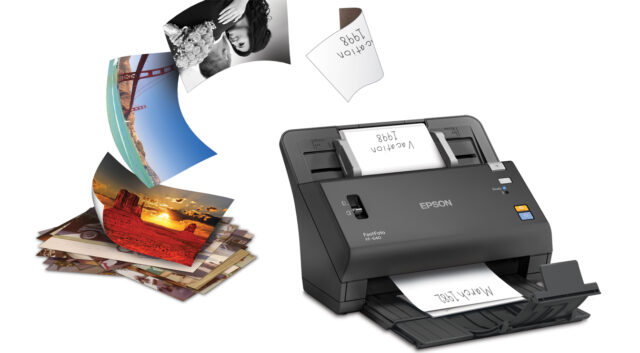
If you’re like most people, you have a multi-function fax/print/scan device that you use for scanning, or you just use your smartphone. If you’re a little more serious, maybe you also have a flatbed. That combination was good enough for me until I needed to scan a couple of shoeboxes of inherited photos. After some research, I bought an Epson Photo FastFoto FF-680W ($559 on Amazon). Its performance has blown me away. Epson bills it as “the World’s Fastest Personal Photo Scanner,” and after using it I have no reason to doubt that claim.
Epson FastFoto FF-680W by the Numbers
In its default mode, the FF-680W scans both sides of a 4-inch x 6-inch photo in one second and can accept batches of up to 35 photos at a time. It is capable of scanning prints, Polaroids, and postcards up to 8 inches by 10 inches. It can even scan long panoramas that are up to 8 inches wide. By default, it creates JPEG files, but you can bump the quality up to 600dpi with TIFF output for archival purposes. It can also do its own enlargement up to 1200dpi.
As you might expect, the “W” stands for wireless. I found it easy to connect to the scanner both over a USB cable and wirelessly. Once you start scanning, you can set the scanner to automatically apply a number of image corrections and enhancements. These include red-eye reduction, fixing skewed images, enhancing colors, and attempting to enhance old photographs. It will even try to auto-rotate images if it detects they are not upright.
Documents are scanned almost as fast as photos, at 45 pages per minute. Internally, the scanner computes at 10-bits per channel (so 30-bits for color), with output at 8-bits per channel. The actual scanning hardware is a 600 dpi (5,100 x 21,600 pixels) 3-color RGB LED. Like photos, documents can be scanned either single or double-sided, with a range of quality settings available.
The scanner ships with a USB 3.0 cable, an AC adapter, and a Carrier Sheet to allow for feeding tricky photos and documents.
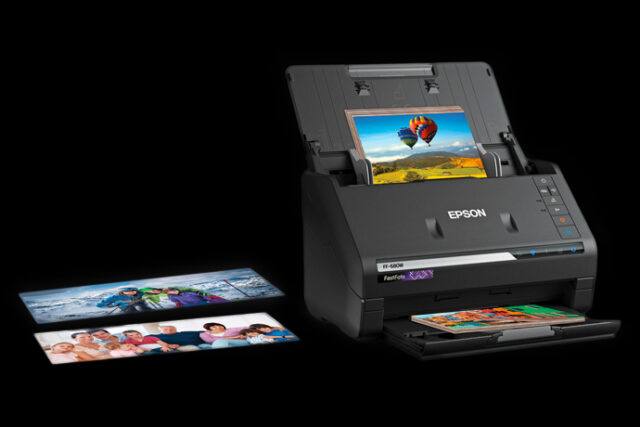
The Epson FastFoto FF-680W has a lot of tricks up its sleeve, including the ability to scan panoramic photos
Dual-Sided Scanning
One feature I hadn’t had on my checklist but that turns out to be really useful is automatic scanning of both the front and the back of photos. For anyone with a collection of photos with various scribbles on the back about when and where they were taken, or who is in them, that’s a lifesaver. Epson’s included FastFoto software is smart enough to group the front and back together.
FastFoto Software
Epson’s scanning software has come a long way since the last time I tried it. FastFoto isn’t a game changer, but it’s a useful application that allows for plenty of flexibility in your workflow. Most users will probably be fine with the default settings of 300dpi JPEGs and can decide whether they want red-eye correction or Epson’s other automated enhancement features. The great thing about them is that FastFoto can save the original scan next to the enhanced version, so you can do your own corrections without rescanning. You can also control whether it scans the backs of photos looking for notes.
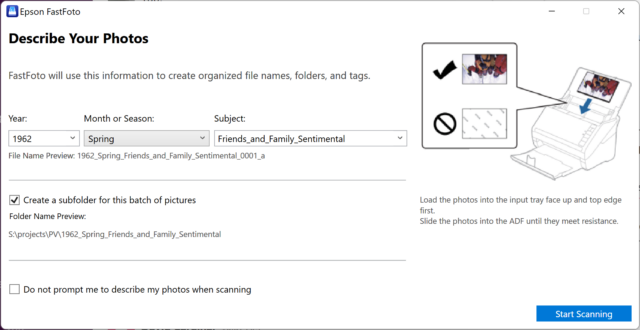
FastFoto has a simple interface for quickly labeling batches of photos as you scan them.
The scanning UI lets you pick both a location and some tags that will be applied to all the images, such as year and time-of-year. It will optionally create subfolders based on the tags for a specific batch. When scanning our photos, I made a habit of sorting them into rough piles before scanning, so that I could tag the images in each pile as I fed them in.
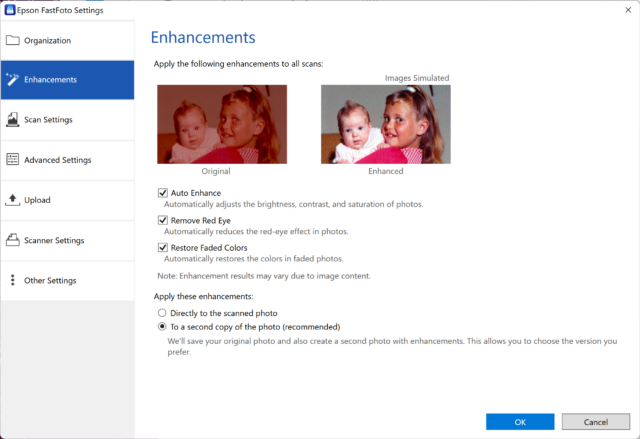
A variety of automatic image enhancements are available in FastFoto. I found they worked well enough for most of our family prints.
FastFoto also allows “1-click” sharing via email or uploading to Dropbox or Google Drive. If your scans aren’t quite what you want, it also provides basic image editing tools, including crop and rotation.
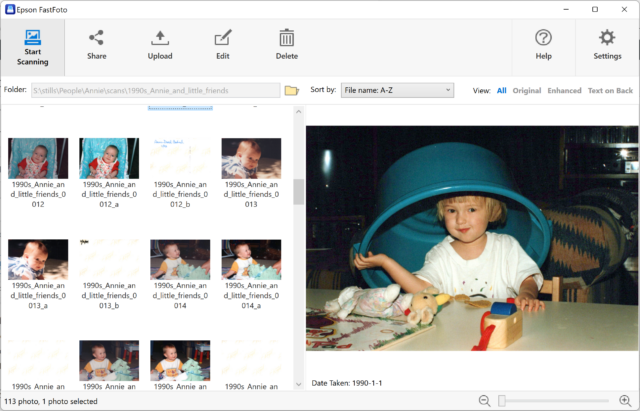
FastFoto lets you filter images by selecting originals, enhanced versions, notes on the back, or all three.
Works With VueScan
For those who want the absolute best-quality scans, Ed Hamrick’s VueScan has been a favorite for many years. I rely on it completely when scanning slides and negatives using my Nikon LS-5000. It’s good to know that it also works with the FF-680W, although in my case I was mostly scanning old snapshots in bulk, so I just let FastFoto do its best.
Makes Short Work of Quality Document Scans
I originally purchased an FF-680W for photo scanning, but quickly discovered that it is just as good at scanning documents as it is at photos. I received just over 1,000 pages of printouts in response to a local Public Records request. It took less than 20 minutes to feed them through in large chunks, save the results as a PDF, and then use Adobe Acrobat DC (full version) to run OCR on the PDF so that it was searchable. The scanner also ships with Epson’s ScanSmart software that can scan documents up to 240 inches long.
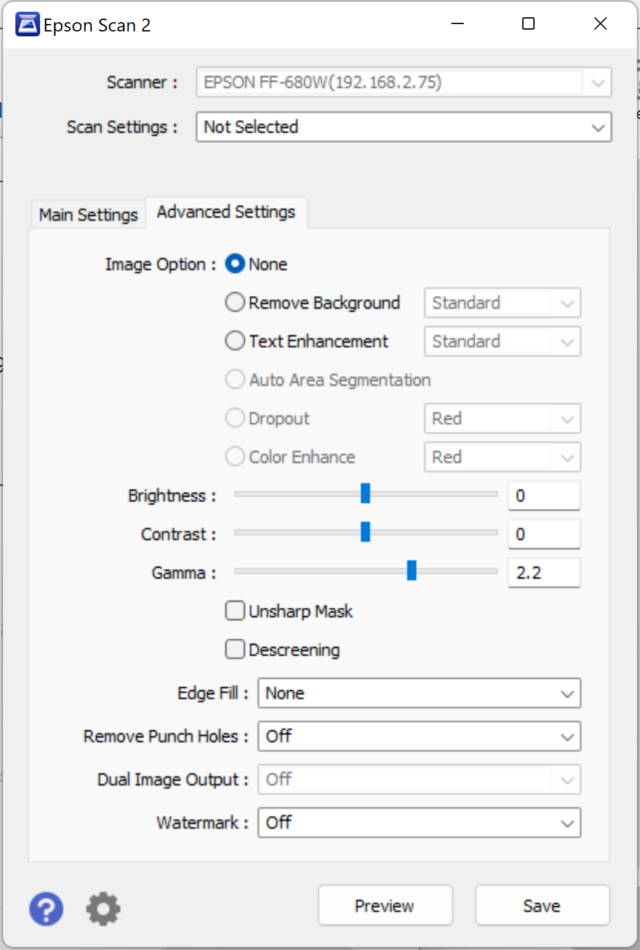
Epson’s ScanSmart document scanning software also offers some interesting image enhancement options
Note that the FF-680W has a sheet feeder and is not a flatbed, so documents need to be in fairly good shape and free of staples or major tears. There is a supplied Carrier Page, which is helpful for oddly shaped or fragile documents.
Is the Epson FastFoto FF-680W Right for You?
If you have stacks of photos or documents in reasonable condition you need to scan, this is an excellent product. We finished our project so quickly that we’ve been letting our friends borrow it for theirs. However, that does bring up the biggest obstacle in scanning most “heirloom” photo libraries: The prints are often already in bound albums. Taking the prints out is not only the biggest time sink in the entire process, but they can come out with bits of glue or stuck-on plastic. In that case, they may not work with a sheet-fed scanner or might gum it up. So you’ll be stuck with the more labor-intensive option of using a flatbed scanner.
Now Read:
[ad_2]
Source link
